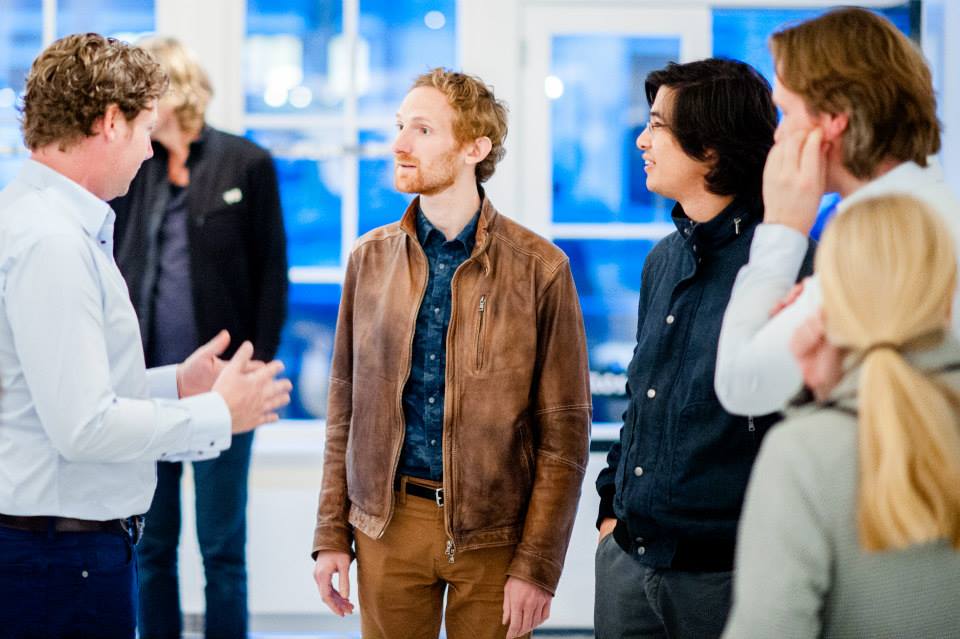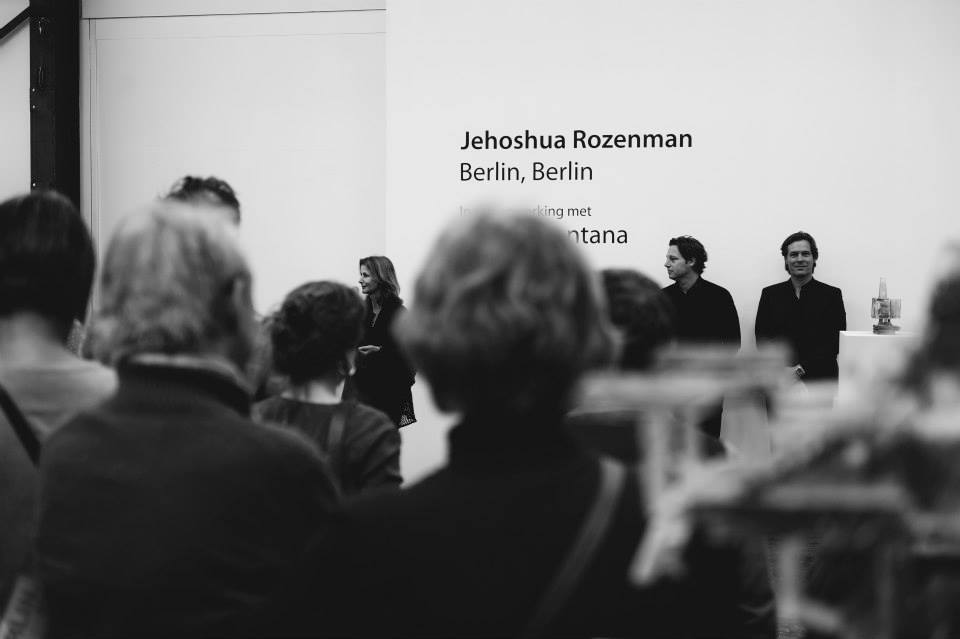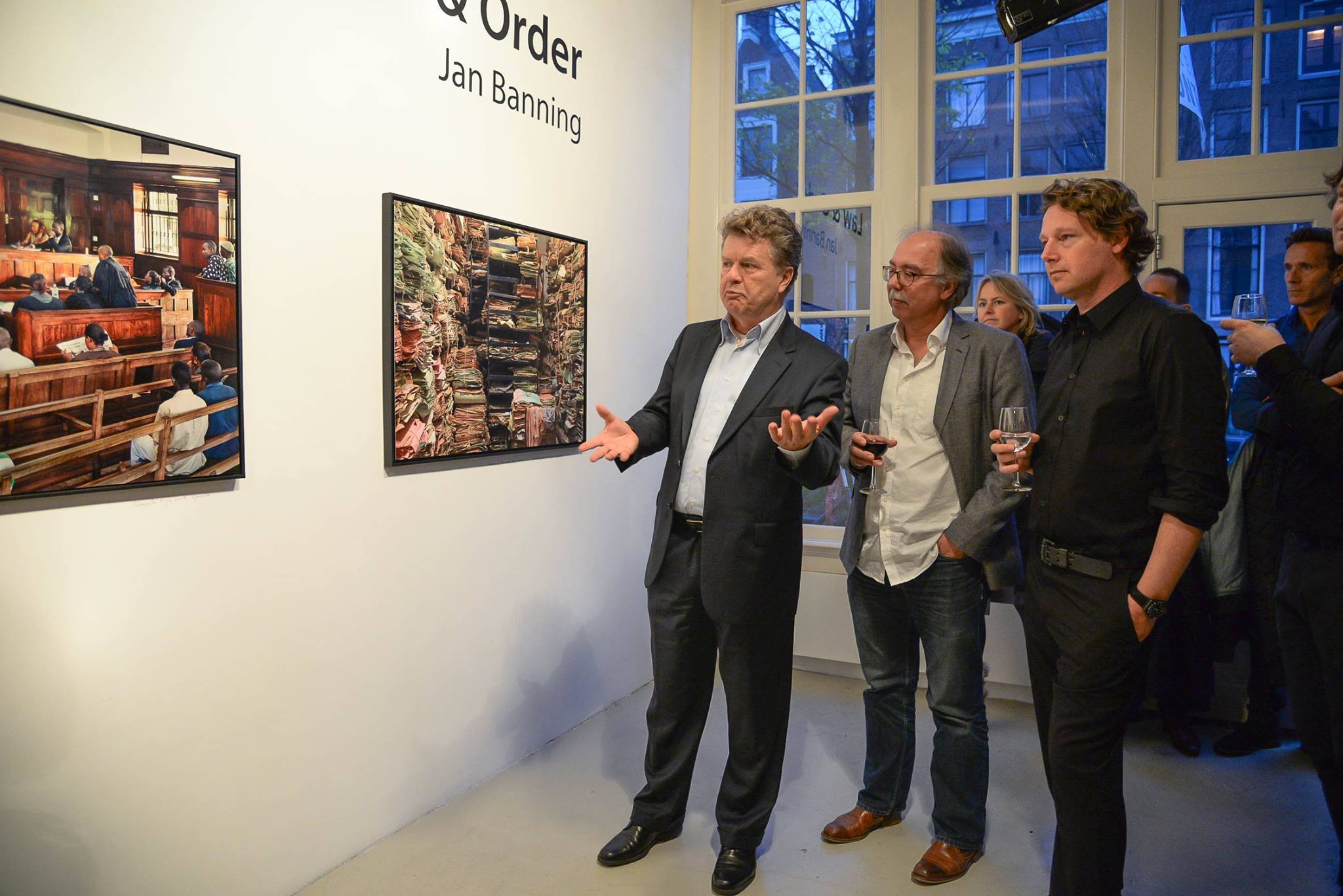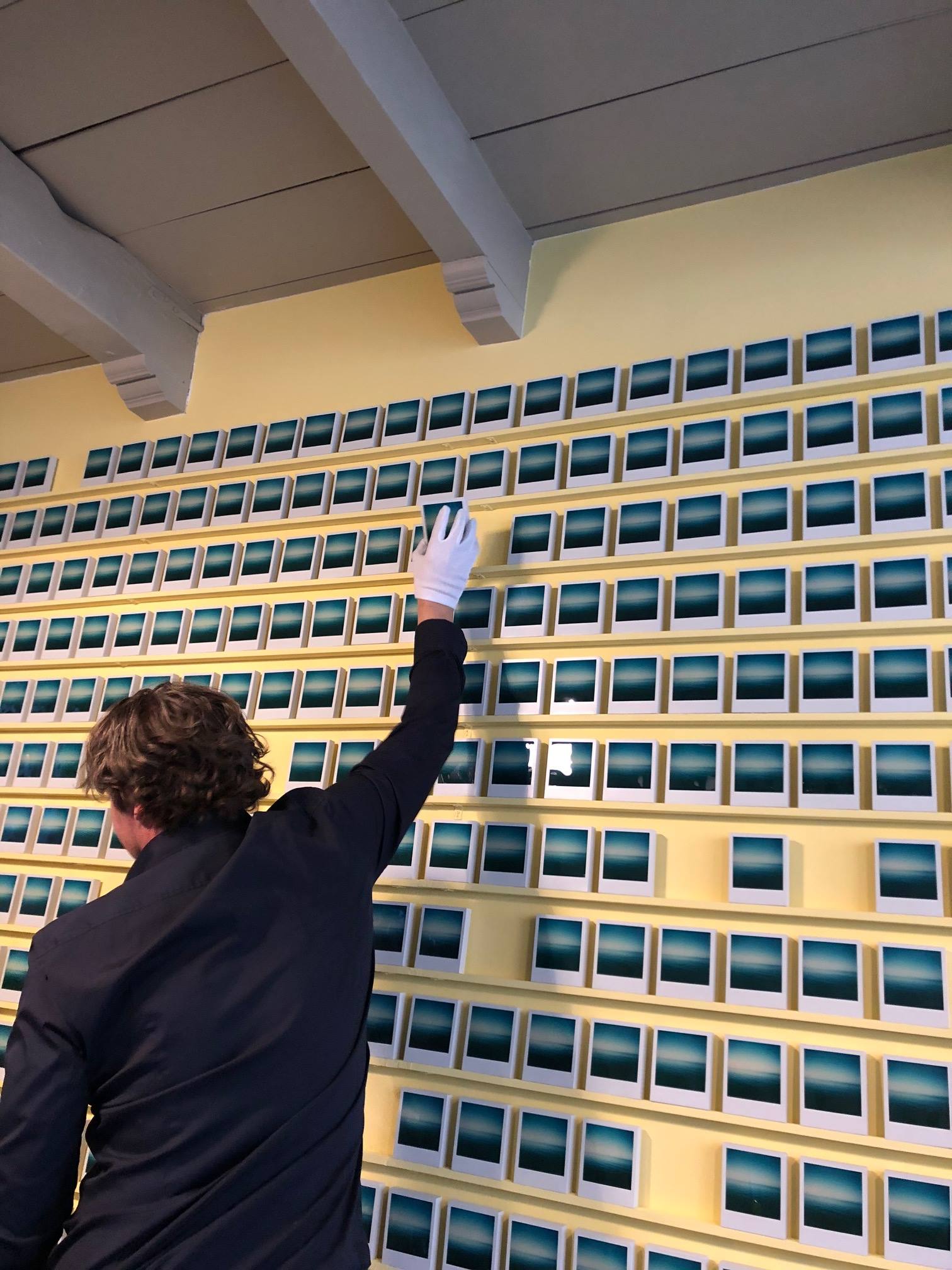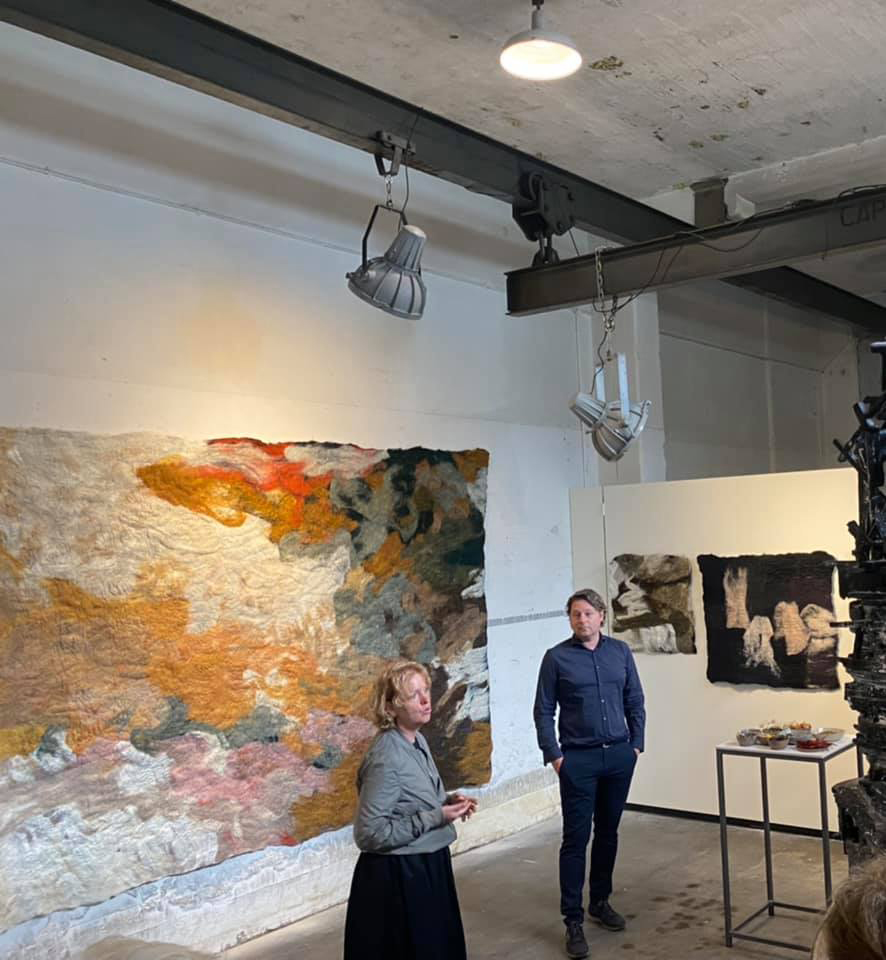15 april 2022, Oscar van Gelderen
The gallery of... Joris Montens & Stefan Heinis
We’re you exposed to art while growing up?
In our home, almost everything revolved around art: reading, film, language and music. As a child you are naturally surrounded by it, however, at that moment you do not fully realize what it will bring you. We often found it dreadful when we had to wait for ages somewhere during holidays until all the paintings and statues had been carefully viewed. Now these turn out to be precious memories of travels, moments, stories, and experiences.
How did you come into contact with the art world?
In a very natural way. Even at a young age, Stefan often went to museums with his family to visit exhibitions and apparently the first seed was also sown for him. We had an uncle in the family, Fons Montens, who painted, drew, etched and designed stamps. There was also a gifted photographer in the Rotterdam branch of the family. When I was young I met Corneille during an exhibition in Rome. I still remember the many birds and cats. I have always been fascinated by these animals, as they are the freest beings on the face of the earth. These days, a work by Corneille would not fulfil us for a long time. It is remarkable how aspects and interests shift as you continue your journey through life.
What was your first job in a gallery? Or did you immediately start a gallery yourself?
We immediately started our own gallery, a big leap of faith, but it turned out to be a great adventure. We were both active in the business world in the first years after our studies: Stefan as a business administrator at the intersection of people and organization, and today he is a partner at AVOP, a consultancy for organizational psychology. He enthusiastically contributes to our Fontana gallery with all the other hours he has left in the evenings and weekends. After my studies, I worked for a few years in Paris as a Responsable Grands Comptes (sales) for a company in innovative internet services. Exciting and adventurous, lots of travel, meeting people, signing contracts - what a buzz. Eventually you get used to it and after several years it became less challenging and satisfying. A nice in-between position between the former career and the present was a project at the design label Weltevree responsible for marketing and sales. Off to Milan to show the creations to the press, public and fast forward with the ideal market approach. We now feel like a fish in the water at our own Galerie Fontana.
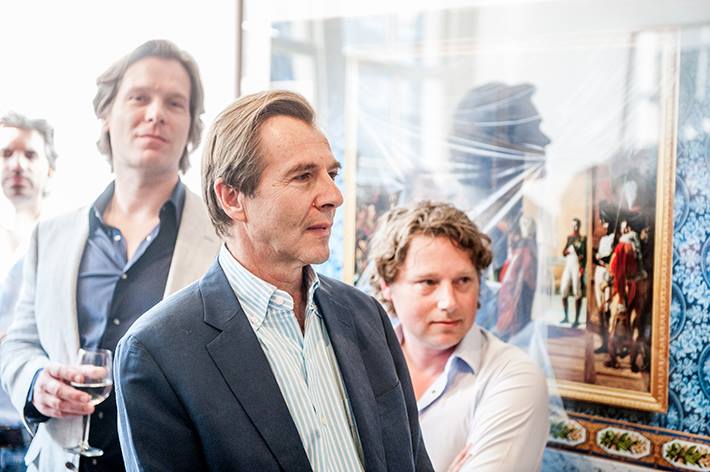
Opening exhibition Robert Polidori, by Margriet Schavemaker of the Stedelijk Museum, Background Stefan left, Joris on the right, May 2014
How would you describe your gallery’s profile?
The main features of Fontana's programme are humanity, vulnerability and mortality. Most of the art that we exhibit finds its origin in this. In addition, many works have an architectural component and often put you on the wrong track, which can be when it comes to the use of materials, layers or perspective. An artist’s craft and craftsmanship appeals to us very much. However, we do not pursue a conscious line, we would like to show artists who inspire us, works of art that touch us, from artists already internationally launched to young emerging talents. At the moment we have an exhibition where the celebrated Claudy Jongstra and a recently graduated painter, Thijs Segers, enter into a dialogue on the theme of nature. Thijs had only just finished his training before when we met him during his solo exhibition in the Noordbrabants Museum.
What do you think is the best part of being a gallerist?
The most beautiful aspect is that we can spend our lifetime learning about art and from the people who love art that come your way; that connects and is the real bonus. The studio visits and conversations with artists about how their work is created and their perspective on their work and the world are also very valuable. Visiting exhibitions at home and abroad. This way you are working, but at the same time having fun because you are doing something you love. Isn’t that great? Another pleasant aspect of the work is the temporary nature of the changing exhibitions. Each time the gallery looks different and we can put together a new exhibition. In addition, in the gallery you usually see every person doing his or her best. You rarely come across someone with a bad temper choosing a work of art or visiting a gallery with a bad toothache.
Which national / international galleries do you feel an affinity with?
There are quite a few. In Amsterdam, we regularly visit our galleries in the Jordaan, the contemporary art district of the Netherlands, with the Hazenstraat as the epicentre. To establish ourselves near this street in 2014 turned out to be a good choice, because of the many joint initiatives and the great colleagues. But we are slightly off it again, apparently that suits us well. We recently moved into a former chocolate factory as a new gallery space, more towards the end of Lauriergracht. In terms of international galleries, we like to visit many cities and have visited all continents, but our main axis is Paris-Brussels. Especially the galleries in the 3rd and 4th arrondissement in Paris and Brussels is getting bigger and more international in terms of gallery offerings: une mer à boire.
In an ideal world, which artist would you most like to represent?
Wow, let's think… an exhibition with many large wooden sculptures by the New York-based artist Huma Bhabha sounds like something for us. Also, I wouldn’t object to a room full of abstract paintings by a new young talent working in the style of the late Joan Mitchell. An enormous amount of choice, but the current reality is also so exciting. Stefan and I are really looking forward to the upcoming inauguration of the first floor in our gallery with the sculptures of our ceramic artist Carolein Smit. A few years ago, her work was embraced by curators at the Victoria & Albert Museum and has been in huge demand worldwide since. She has a large number of loyal collectors in the Netherlands and many Dutch museums have her work in their collection. Her talent and multitude of inspiration in combination with the dedication with which she works, for days on end – in a constant flow and focus – is unprecedented.
What has changed in the art world since you took your first steps?
There is a growing public interest in art, as well as a greater focus on unique high-profile work among existing collectors. Fortunately, the systematic collecting of several works during an artist's career continues. There is a great need for something topical, something to which we can connect in terms of ideology or way of thinking, an expression or message that sparks the mind. Themes such as origin, social equality, devotion and inclusivity appear to be very topical, however, the highest good remains that a work of art is brilliantly made, without us understanding exactly why; inciting a spiritual uplifting experience.
In addition to the physical gallery and art fairs, a growing number of online platforms have emerged as sales channels. Which of these will eventually dominate the market is not clear yet. GalleryViewer has managed to create a prominent position for itself on the Dutch market in a short period of time.
What / whose work do you collect yourself?
Over time we’ve become more selective. If a work does something to us, then apparently it suits us. Of course we own many works by our own artists, after all we spend all day in our own candy store. An important criterion for representing an artist is that we also want to collect these ourselves, which proves that you really have something with the work. There are, however, many works of art related to architecture, most of them from the Brutalism movement (long live the powerful block-like structures of raw concrete!). But also quite a bit of lyrical abstract, outsider art and many other styles. Old masters alongside young talents, but we also love design.
Has the pandemic changed the way you see the artworld?
No, not to a great extent. Business continued to run smoothly, in fact: it just got an impulse, people apparently wanted to spoil themselves, art offers comfort in difficult times. We were allowed to sleep a little longer, walk, read and discuss a lot. Since most of the fairs were cancelled or rescheduled, we rented an extra space, an old metal factory two doors down, to organize our own fair, as it were, with works by the various artists we represent.
This has worked very well. All our artists have remained very active and creative during this period without much distraction. A good example of this is our artist Ronny Delrue. He has worked well in his Ghent studio and will be showing his various new drawings, paintings, sculptures and bronze objects in the gallery during the upcoming Amsterdam Art Week. Be welcome at Fontana in the chocolate factory!

